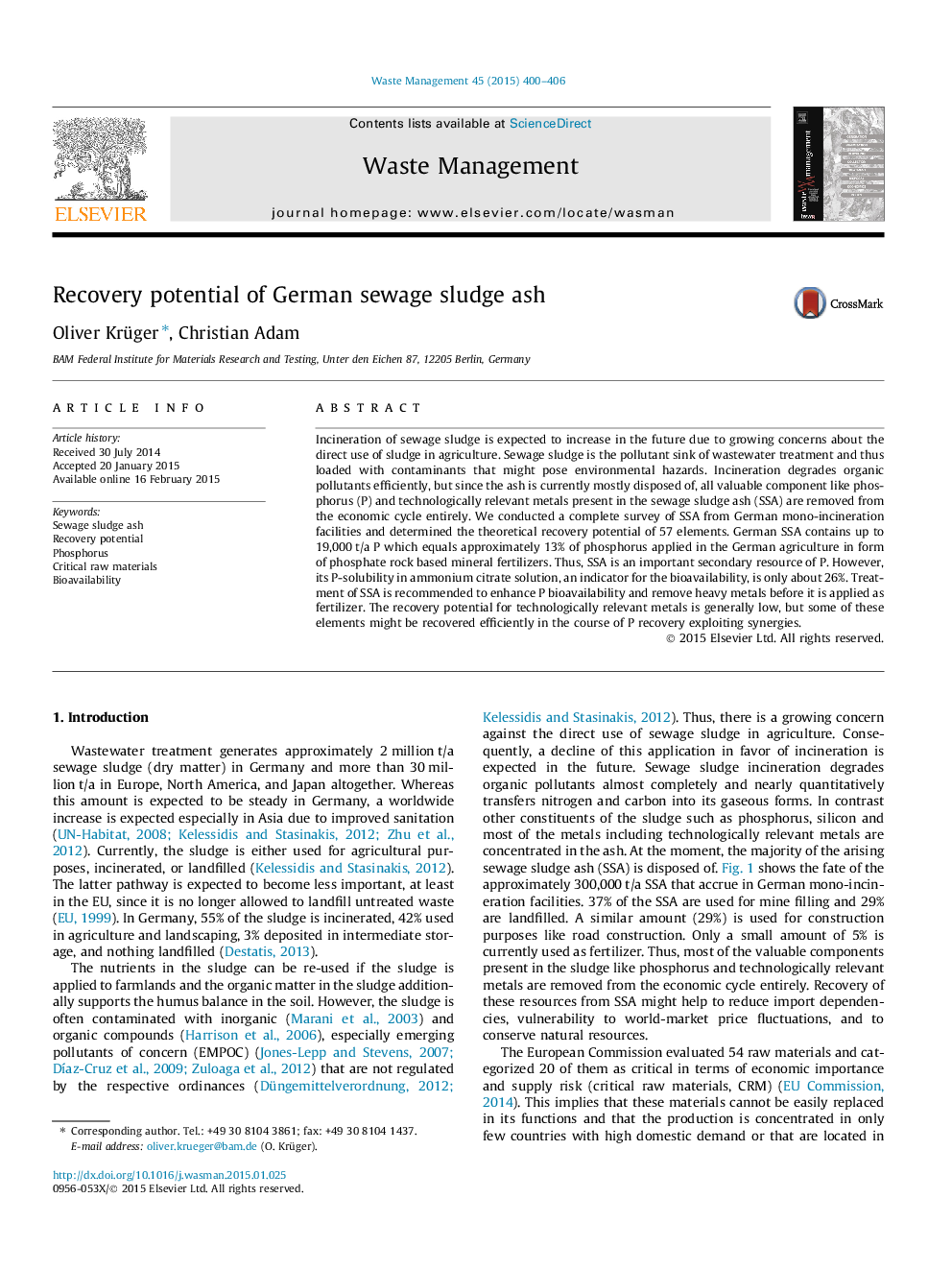| کد مقاله | کد نشریه | سال انتشار | مقاله انگلیسی | نسخه تمام متن |
|---|---|---|---|---|
| 6354368 | 1622640 | 2015 | 7 صفحه PDF | دانلود رایگان |
- Recovery potential of 57 elements (incl. phosphorus) from German sewage sludge ash (SSA).
- The bioavailability of phosphorus (solubility in neutral ammonium citrate).
- The influence of different incineration techniques on the SSA.
Incineration of sewage sludge is expected to increase in the future due to growing concerns about the direct use of sludge in agriculture. Sewage sludge is the pollutant sink of wastewater treatment and thus loaded with contaminants that might pose environmental hazards. Incineration degrades organic pollutants efficiently, but since the ash is currently mostly disposed of, all valuable component like phosphorus (P) and technologically relevant metals present in the sewage sludge ash (SSA) are removed from the economic cycle entirely. We conducted a complete survey of SSA from German mono-incineration facilities and determined the theoretical recovery potential of 57 elements. German SSA contains up to 19,000Â t/a P which equals approximately 13% of phosphorus applied in the German agriculture in form of phosphate rock based mineral fertilizers. Thus, SSA is an important secondary resource of P. However, its P-solubility in ammonium citrate solution, an indicator for the bioavailability, is only about 26%. Treatment of SSA is recommended to enhance P bioavailability and remove heavy metals before it is applied as fertilizer. The recovery potential for technologically relevant metals is generally low, but some of these elements might be recovered efficiently in the course of P recovery exploiting synergies.
Journal: Waste Management - Volume 45, November 2015, Pages 400-406
